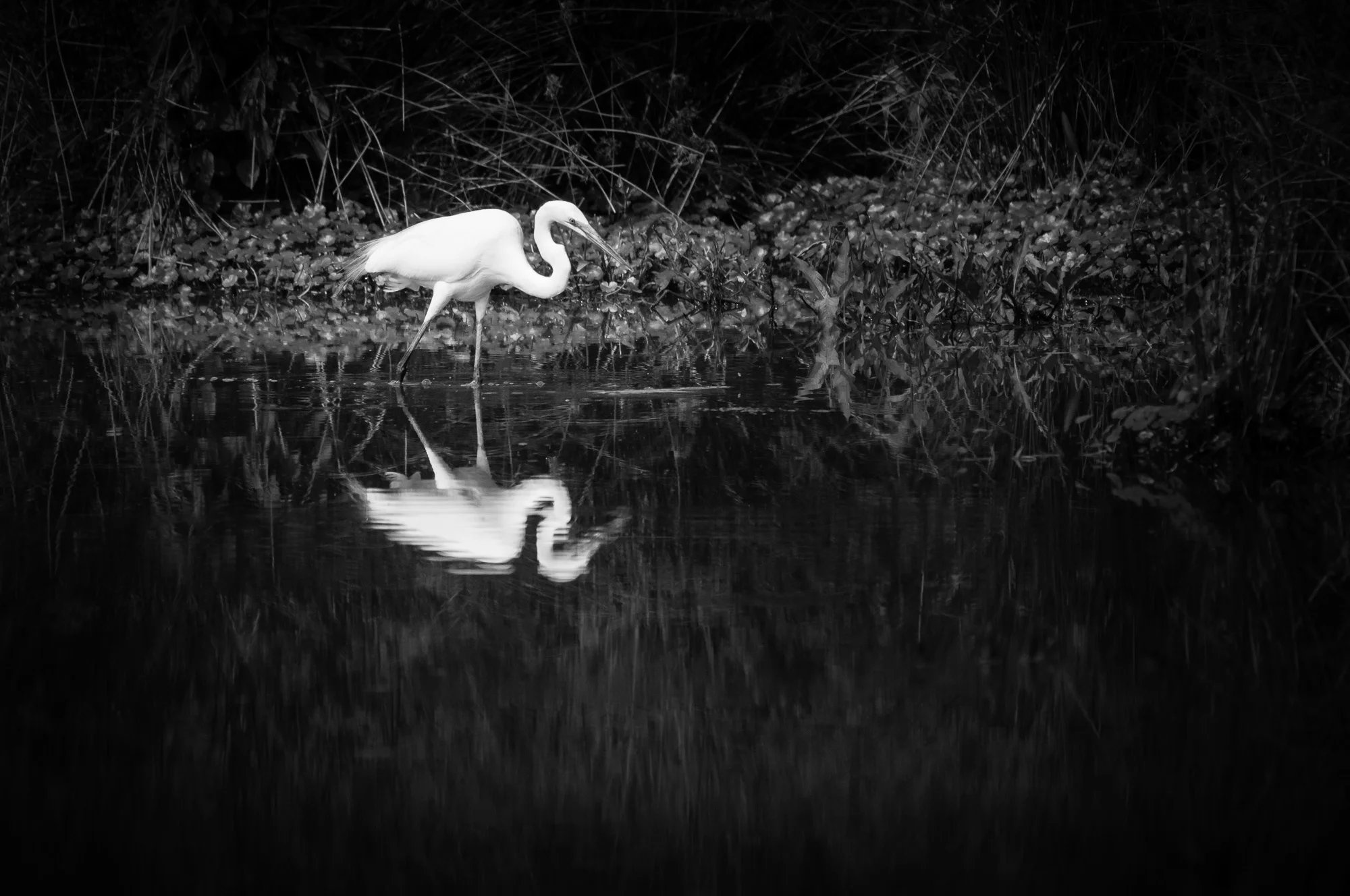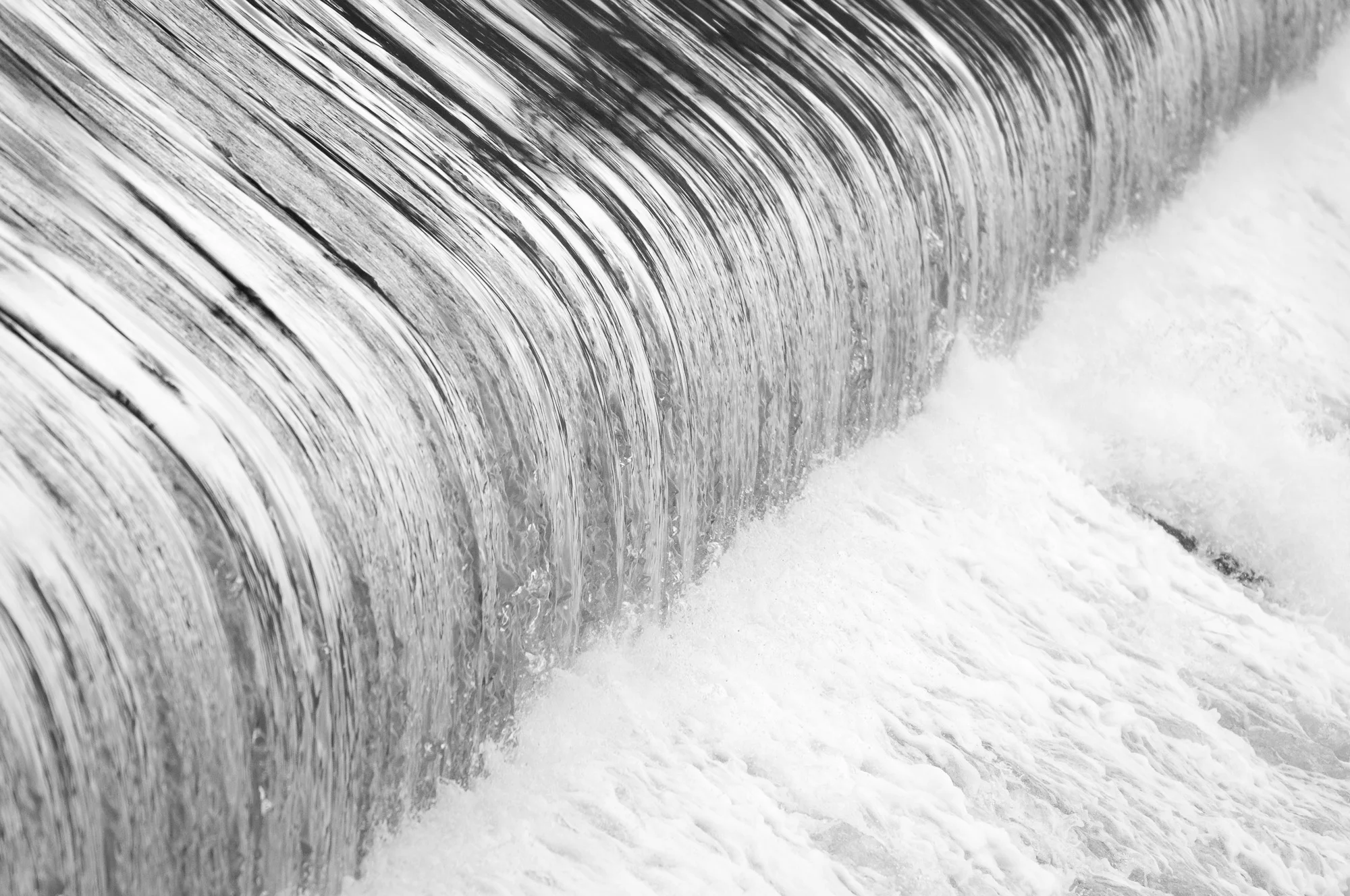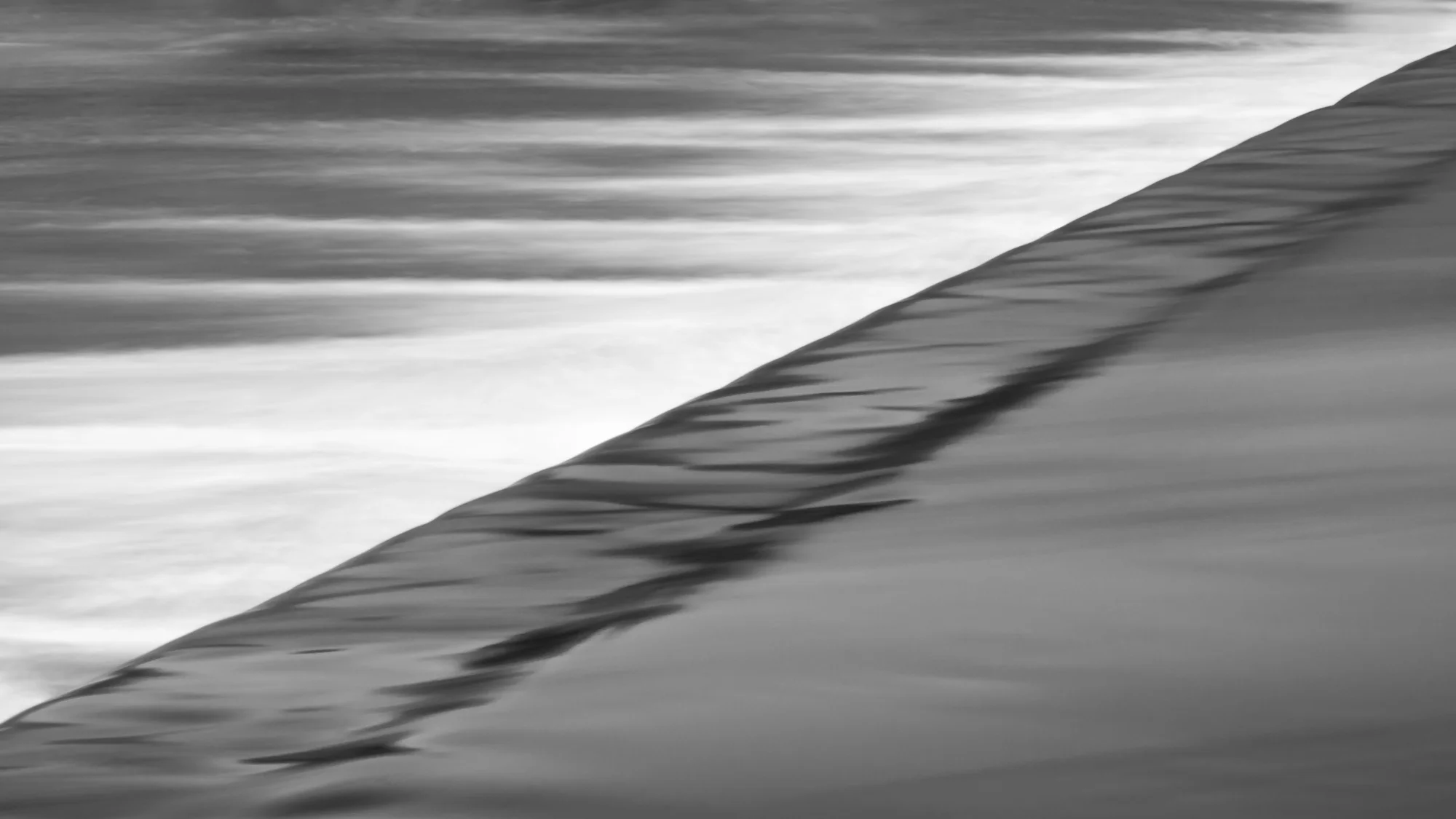Reflections in the Wetlands. Click on the image for a larger view.
When I visit wetlands parks I am most often looking for wildlife to photograph. But these sorts of locations can provide much more subject matter than wildlife alone.
The photograph above does, in fact, contain wildlife. If you look closely there is a Great Blue Heron near the center of the far shore. And a number of ducks are hidden in various locations. But I don’t consider the wildlife the subject of the photograph. For me, the photograph is all about the reflections and the patterns they create.
I was photographing several species of duck far closer to my location, using my 200-400mm lens. As I looked around the wetlands I noticed the beautiful pattern in the reflections along the far shore. This was mid-March in Virginia and all the trees were bare, a little too early to begin growing leaves. So the reflections formed fascinating lines and patterns, lighter where the sun shone on a tree trunk, darker on the shaded side and between the trees. There was a small amount of movement to the water that added a slight shimmer further from shore.
I turned my camera towards the far shore and looked for a focal length that would capture what I was seeing. This particular photograph ended up at 280mm. I framed the image to focus mostly on the reflections but also capture some of the trees being reflected. I did intentionally include the Great Blue Heron. I figured it was a nice addition, though it is standing behind a pole in the water.
I thought about creating a symmetrical composition, including the same amount of each island on either side of the image. But instead I opted for a bit less symmetry, showing the entirely of the island on the right and giving the heron more room since it was facing in that direction.
This image was created at a fast shutter speed (1/1250 sec) because that’s what I’d been using with the ducks. I would have been curious to create versions of this image with slower shutter speeds, perhaps several seconds or more, to smooth out the water and possibly create more clear reflections. I don’t know if I would have preferred that version, but would like to have seen them both. However, slower shutter speeds are not as easy with the longer lens. If I’d had a 70-200mm with me I could have used that along with a neutral density filter, if needed, to slow the shutter speed down. Perhaps next time.
Next time you find yourself in a wetlands park take a look at the wetlands, itself. Are there any interesting compositions, any reflections, patterns, or colors that could make a nice image? Let me know what you find in the comments below.
Do you enjoy these posts?
Sign up to receive periodic emails with updates and thoughts. Don’t worry, I won’t spam you. And please consider purchasing artwork or products from my online store, and using my affiliate links in the sidebar to the right when shopping online.
I appreciate your support!












































